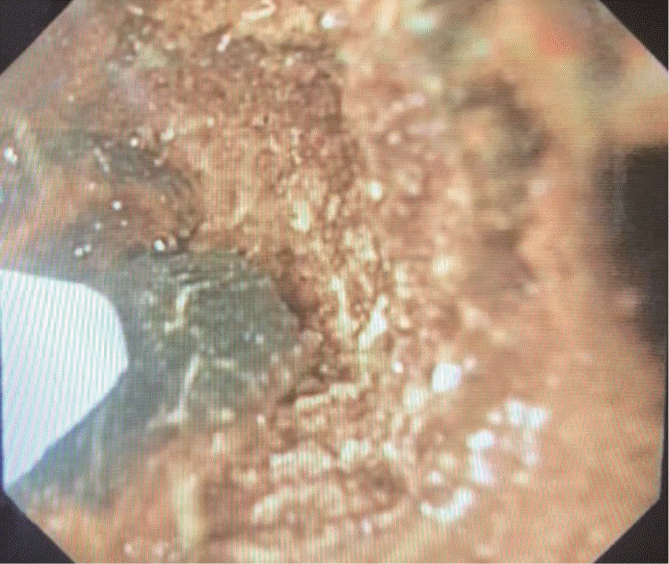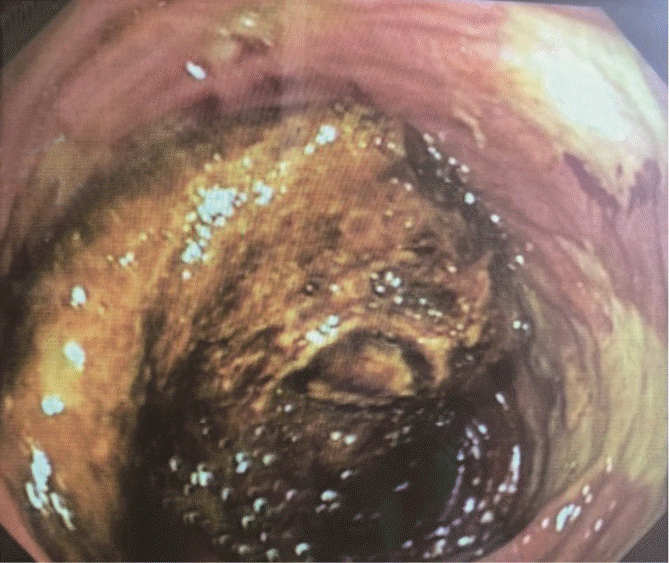Bouveret syndrome (BS) is a rare form of gallstone ileus in which the gallstone impacts in the duodenum. Although its treatment is surgical, endoscopic approaches have been used in severely ill patients.
BS was diagnosed in a 73-year-old man with multiple comorbidities: a cholecystoduodenal fistula and a 44-mm gallstone in the third portion of the duodenum (D3). Esophagogastroduodenoscopy (EGD) was performed, which revealed a gallstone occlusion (Fig. 1); we created a tunnel through the stone, culminating in its passage to the jejunum. Resolution of the occlusion and fragment migration downstream was achieved, with the largest fragment remaining in D3 (Fig. 2). On the following day, another EGD was performed to remove the residual fragments. Complete clinical resolution was achieved a few days after the procedure.
Few cases of BS treated with electrohydraulic lithotripsy (EHL) have been described. Most gallstones were impacted in the bulb or in the second part of the duodenum, the largest being 47 mm in diameter [1]. Although EHL is a laborious procedure and carries a risk of duodenal wall perforation or treatment failure, it can prevent the need for surgery.




 PDF
PDF Citation
Citation Print
Print





 XML Download
XML Download